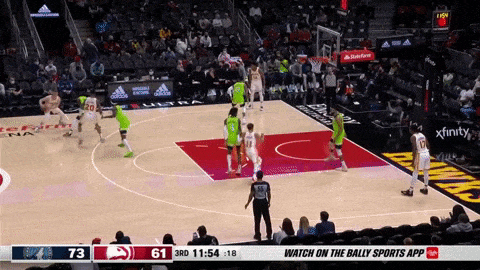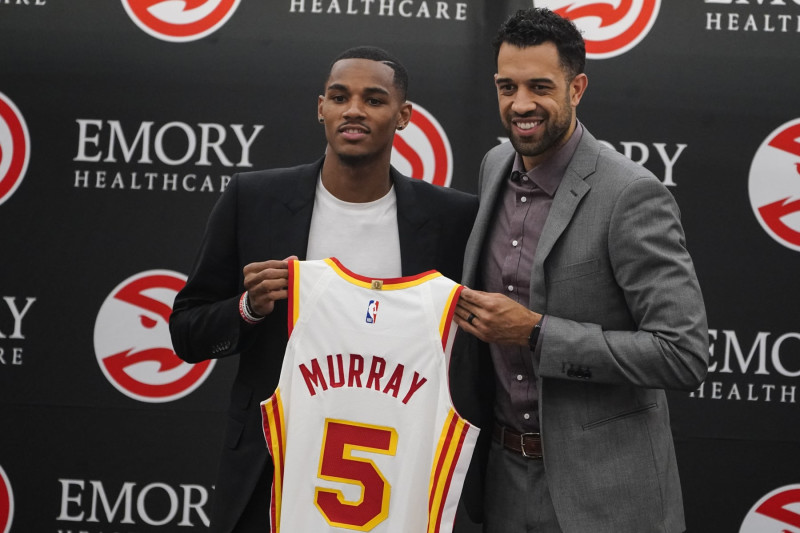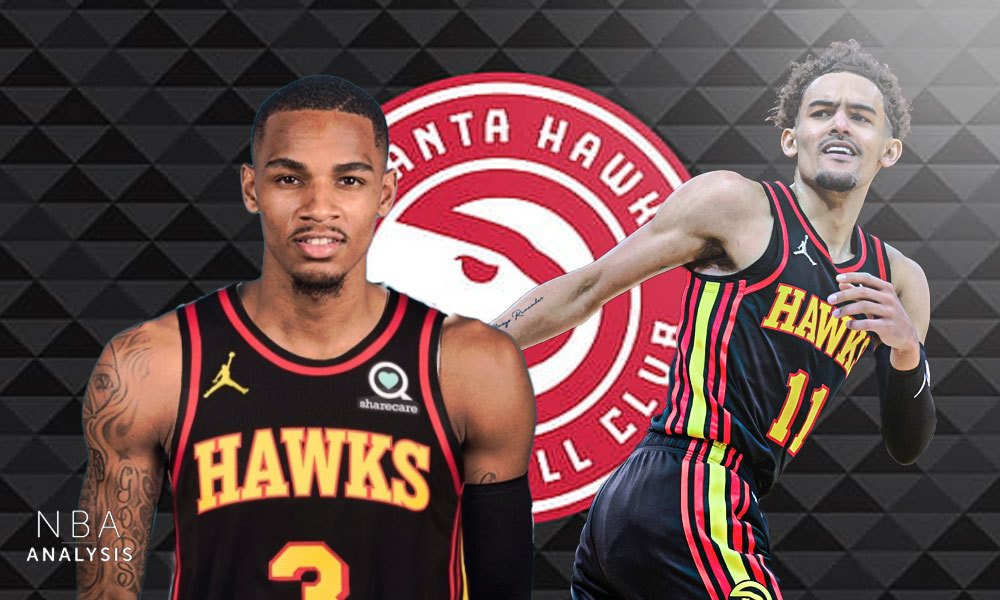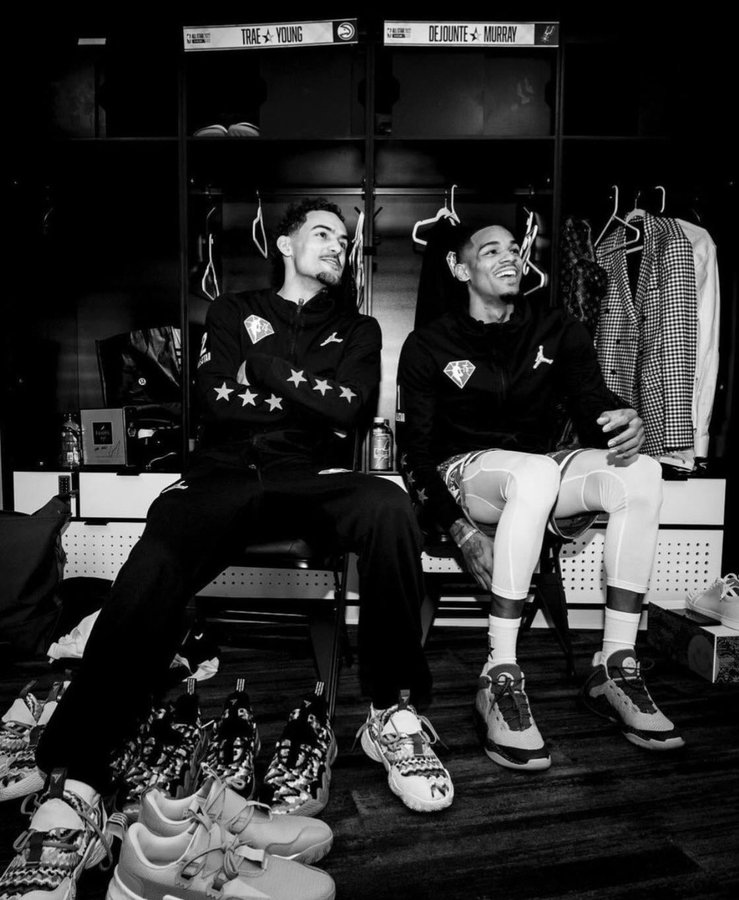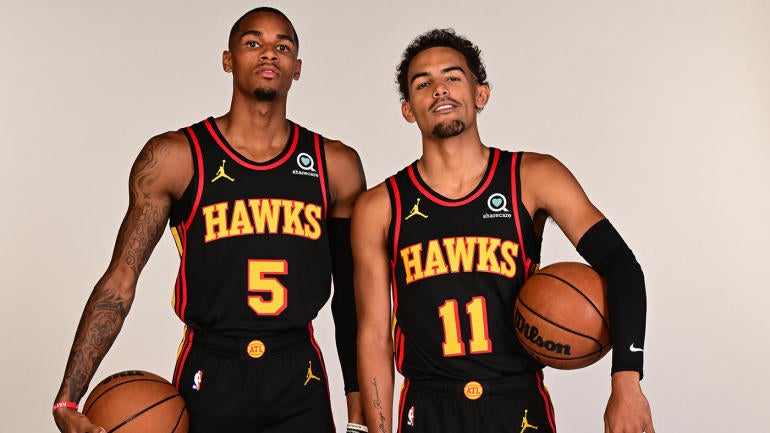Three Keys to Success for Trae Young & Dejounte MurrayTrae Young and Dejounte Murray are both scoring-playmakers. But what kind of dynamic is needed for the Atlanta Hawks to make a deep Playoff run next season?With the arrival of former San Antonio Spurs point guard Dejounte Murray, the delicate balance of the Atlanta Hawks starting rotation inevitably changed, and for the better. Murray, who was selected to his first All-Star game last season, really grew into his two-way strengths and will look to generate a significant impact alongside his guard mate, Trae Young.
Naturally, building chemistry will take time, and that’s a given. However, understanding how to work with each other’s differences and similarities is something else entirely and a significant challenge for the Hawks starting guards to figure out and manage throughout this season.
1. Allow Both To Run The Offense[W]hat’s important to understand here is that throughout Murray’s time in the NBA, he’s developed a skill set predicated on the makeup of a point guard, especially with his knack for passing. As a result, Murray isn’t your typical ‘catch-and-shoot’ type of two guard that the Hawks had in Kevin Huerter, for example. And his ability to facilitate and run an offense as well as he did in San Antonio shouldn’t be limited based on his new role in Atlanta.
So, how does this work? Well, when both players are on the floor (and they will be starting together), it’s crucial that they develop a free-flowing give and take between setting up plays and scoring. With Murray’s ability to shoot, drive, and crash the glass incredibly well, he doesn’t need the ball in his hands all the time to be effective. This also applies to Young. Because Young can shoot just about anywhere and is an elite finisher around the paint, it’s not crucial for him to always have the ball in his hands for him to implement his best work.
In addition, when Murray takes a rest mid-game, Young can manage the offense while his teammate catches his breath, and vice versa when Young is subbed out.
2. Embrace Passing & Unselfish PlayThis is tied into the previous point. But in short, both guards should embrace the passing skills and unselfishness they’ve fostered over their NBA careers. Doing so will space out the floor and grant all their additional scoring threats the liberty to cash in on easy, high-percentage looks.
To add to it, keeping a defense guessing is one of the biggest goals an offense wants to achieve throughout the course of a game. Not knowing who might score and how is extremely difficult to match up against for any opposing team. However, as soon as you become predictable is when defenses will adjust and force stops or turnovers.
If Murray and Young maintain the proper balance of passing and unselfish playmaking, this Hawks team can go very far this season.
3. Teamwork On DefenseIf the Hawks are aiming to go far next season with this backcourt, both Young and Murray will need to deliver the highest levels of defensive resiliency and efficiency they can muster together. Though winning a championship requires a team to have an elite offense, it’s just as vital for it to bring the same level of success (if not better) defensively.
When it comes to Murray, the Hawks acquired a guard who is a very talented defensive competitor and comes with the physicality and length to be quite challenging to score against. In his second season in the NBA, Murray was named All-NBA Defensive Second Team and has continuously improved his ability to steal the ball, leading the league last season with 2.0 per game. Though he hasn’t been named to an All-NBA Defensive team since his sophomore year, Murray has continuously shown how great of an on-ball defender he is and how imposing he can be on a consistent basis.
As for Young, he remains the weak link between the two and hasn’t illustrated the defensive capabilities many believe he can produce just yet. Because Young doesn’t have the size or length to make a significant difference defensively, he gets bodied off the ball by bigger guards and won’t come up with many steals, averaging 0.9 over his five-year career. That said, that doesn’t mean Young can’t play good defense and use his skills to force turnovers, be it with his speed, quickness, awareness, or active hands.
This factor remains the most important for this tandem to achieve if they plan on leading the Hawks to their first Finals appearance [in more than 60 years].

